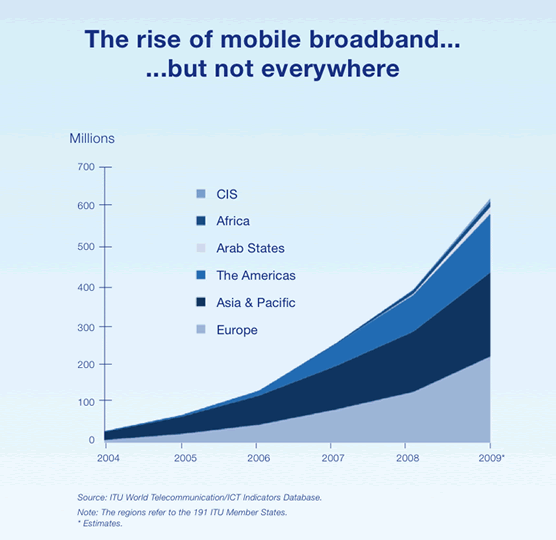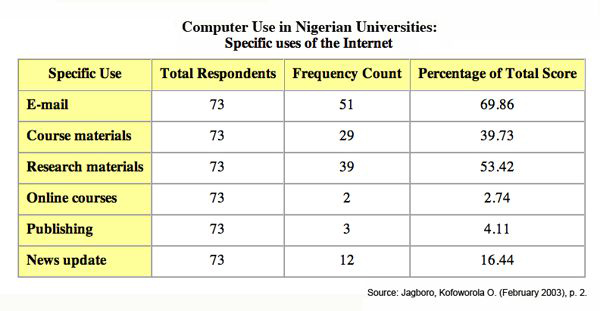Introduction to Chapter 5
This chapter is based on "Literacies and the Complexities of the Global Digital Divide," first published in Writing and Digital Media, edited by Luuk Van Waes, Mariëlle Leijten, and Christine M. Neuwirth (Elsevier Ltd., 2006) with the kind permission of the current publisher, Emerald Group Publishing Limited.
Here, we continue the process of reporting on a series of literacy narratives that we have collected from people with transnational connections, many of them having come to the United States for tertiary-level study. Interspersed with their stories are images of the global ecologies in which they travel, represented through multiple media. The goal of this research is to find out more about why and how people from around the world acquire and develop digital literacies. We are also interested in how these literacies intersect with people's education and everyday lives.
Our hope with this work is to explore notions of digital literacies in global contexts and to bring nuance to discussions of the term "digital divide," which may more accurately be described as a complexly related set of digital divides that mirror cultural, historical, economic, and ideological formations already existing in various parts of the world. We have selected the cases of Dipo Lashore and Pengfei Song because both men, while they are from different countries, grew up during a period essentially coincident with the invention of the microcomputer. Both were born after 1979, a date that provides a reasonable starting point for examinations of the information society, and they also were attending either elementary or secondary school when the term "digital divide" first came into use in 1993. In addition, the two young men were in college or preparing for college when the same term was mentioned in United Nations press briefings in 2000. Focusing our exploration on this important period of time, we believe, can help deepen understandings of the rise of the information society and its relationship to the changing digital divide at key points in history within a global context.
In presenting the literacy narratives of Dipo and Pengfei, we recognize that it is difficult to understand their stories without also understanding something about the complex relationships among language, technology, and culture. The high-tech expansionism characterizing the United States and western Europe during this period of rapid technological development supported not only the globalization of markets and new transnational economic formations, but also the increasing exportation of Western culture and the "globalization of discursive practices" that "increasingly flow across the boundaries of culture and language" as Christina Schäffner (2000) explains (p. 4).
Of particular concern to scholars during this period was the growing dominance of English. A frequently cited anecdote in discussions of this problem came from speeches given by U.S. Vice President Al Gore in 1994:
"Last month, when I was in Central Asia, the President of Kyrgyzstan told me his eight-year-old son came to him and said,
'Father, I have to learn English.'
'But why?' President Akayev asked.
'Because, Father, the computer speaks English.'"
Comments like Gore's prompted Joe Lockard, in 1996, to articulate concerns about the linguistic imperialism of English:
"English is local; cyber-english is global. A superdominant english specifically intrinsic to a computer-mediated technology base, cyber-english has rapidly come to serve as a transmission belt for 'free market' ideologies…. The colonial pursuit…has historically relied on over-languages to endorse a politics of subordination…. Viewed as a stage in this historiographic continuum, cyber-english is the latest extension of a centuries-long drive towards extinction of small tribal languages and consolidated expansion for a few languages of power."
Few doubted in the late 20th century that English had cornered the Internet.
It was within this dynamic technological and cultural context, then, that Dipo Lashore and Pengfei Song were born, grew up, and acquired both their conventional literacies and their digital literacies. Their stories, we believe, provide a valuable snapshot of the complexities of the digital divide for literacy and technology researchers in the twenty-first century.
To illustrate digital technology trends in the past decade, below we list several observations growing out of research by the International Telecommunications Union (ITU, 2009), whose mission is to bring together "the most influential representatives of government and the telecommunications industry for the exchange of ideas, knowledge and technology for the benefit of the global community, and in particular the developing world."
"The relative price for ICT services is highest in Africa, the region with the lowest income levels."
"In Africa, the cost of the ICT [service] represents 41 per cent of the region's monthly average income."
"In Europe, where income levels are highest, relative prices for telecom services are lowest."
"In 2008, China overtook the US as the largest fixed broadband market in the world."
"At the end of 2008, China's fixed broadband penetration was 6.2 subscribers per 100 inhabitants, the highest of any low or lower-middle-income economy in Asia and the Pacific."
"The price for fixed broadband access remains prohibitively high in most developing countries, effectively limiting access to the Information Society."

As the ITU reported in 2009, "There is a dramatic broadband divide, with very few fixed broadband subscribers or mobile broadband subscriptions in Africa." The U.S. accounts for 82% of mobile broadband in the Americas, while in Asia and the Pacific, Japan and the Republic of Korea make up 70% (ITU, 2009).
Thus, as we turn to Dipo and Pengfei, it is crucial to recognize the changes in the global divide that took place from the early 2000s, when they became college students in the United States, through subsequent years, as they traveled back and forth between the United States and their homes in Lagos, Nigeria, and Yinjiahe, Shandong province, China, respectively.
Statistics documenting the relationships among computer access, literacy, education, and patterns of regional poverty describe an amazingly complex global digital divide that shifts dramatically as the technology itself—along with requirements for access—changes, with often unpredictable results. When we first began our digital literacy research with those who claimed transnational connections, for example, we recognized the importance of mobile phones, but did not foresee the 2007 introduction of the iPhone and other smartphones as literacy devices. Also, since Dipo LaShore and Pengfei Song joined us as coauthors in 2003, broadband connections have continued to become increasingly important and mobile broadband access increasingly common. In the past several years, we note, mobile phone growth has been exponential, with an estimated 4.6 billion subscriptions globally by the end of 2009 (ITU, 2009).
As G.A. Alabi (1996) reported:
"Within Nigerian Universities, 63%…reportedly communicated by messengers/couriers…only 1% of respondents…communicated by e-mail within their university communities…. Electronic mail access was reported by only 3% of respondents…." (15.1.4)
A case study of one Nigerian university, completed in 2003, indicated that only 8.2% of respondents had access to a computer in the university library, which "suffered from a low level of connectivity" and "restrictions placed on the use of this facility," while 45.2% had access to these machines in cyber cafés (Jagboro, 2003, "Access to the Internet, Table 2").

Today Nigeria, like most of Africa, continues its efforts to provide a more adequate computer infrastructure to bolster its struggling economy, with mixed success. As Dipo observed, by 2003, Nigeria had begun the long process of building a computer infrastructure, and some things were changing in his home country. It was also, however, clear that the process would be a long one.
previous < > CHAPTER 5: Oladipupo "Dipo" Lashore




